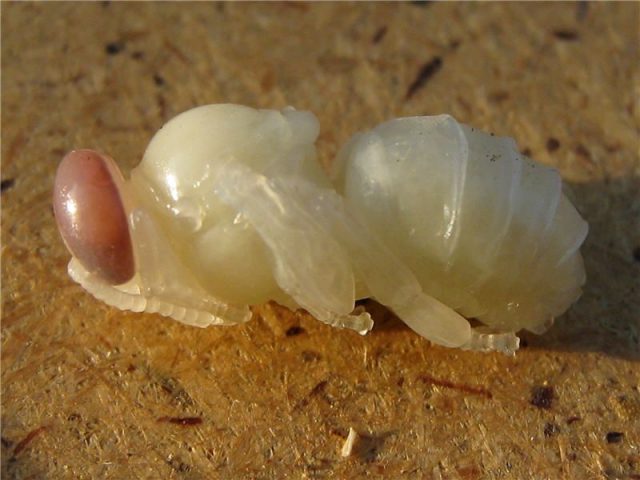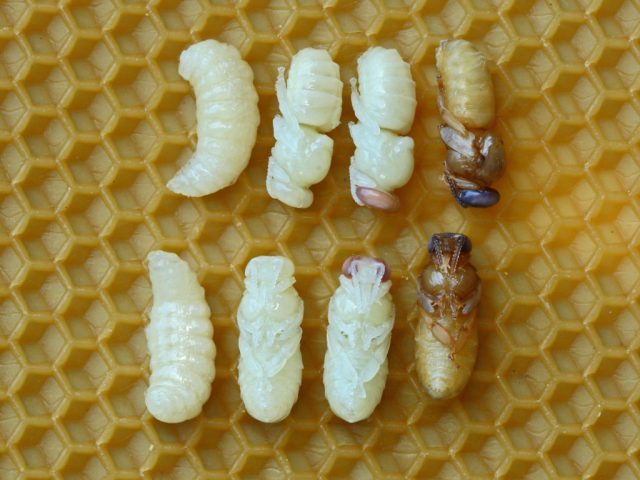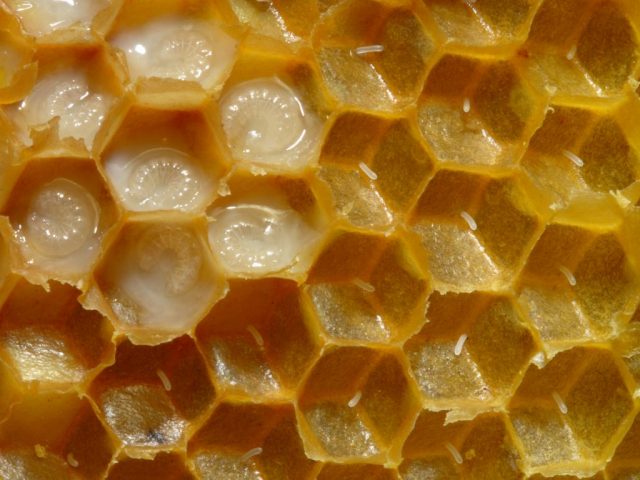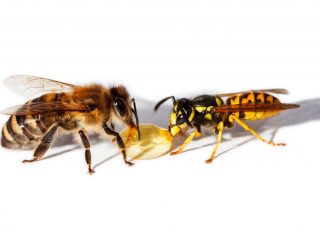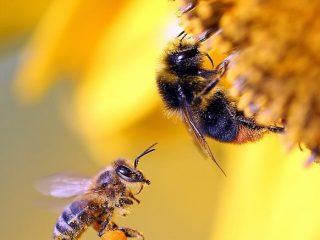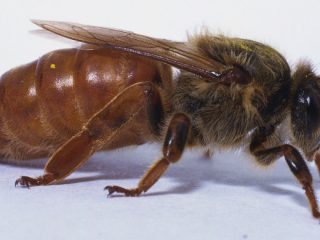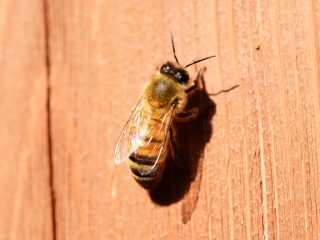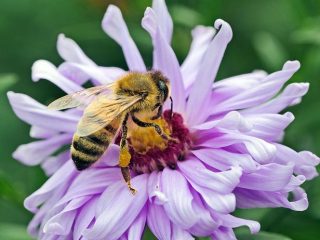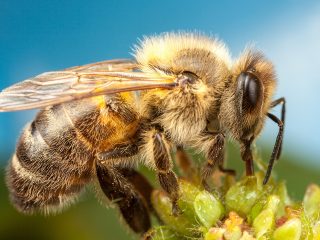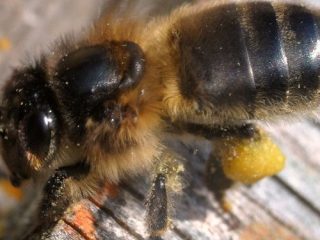Content
Bee larvae, as well as eggs and pupae, are classified as brood. Typically, the pupa is sealed brood and the eggs are open brood. As you know, the queen bee lays eggs in queen cells and then fertilizes them. Subsequently, other queens, working individuals, develop and grow from the eggs. If for some reason the clutch was not fertilized by the uterus, then drones - males - will be born from the eggs.
How many days does a bee hatch?
Honeybees live in nature in colonies that number tens of thousands of workers and just one queen of the hive. As a rule, drones are needed only in the summer and their number is much smaller - 100-200 pieces.
The queen is responsible for laying eggs, and the number of new individuals depends on its quality. Most of the female worker bees are born. After 21 days, the bees hatch and become workers. The period of development of the uterus is much shorter and takes only 16 days.
After the workers are born, they first perform work in the hive; upon reaching adulthood, they can leave the hive:
- 1-3 days – cleaners (gnaw out pupae from cells, clean the hive);
- 3-13 days – nurses (process honey with beebread, feed the queen, drones, baby bees);
- 13-23 days – receptionists (take pollen, nectar, enrich with enzymes);
- 23-30 days – guard (guard the hive).
Males, that is, drones, develop within 24 days after the queen lays eggs. The life cycle of a drone bee is no more than 3 months.
Stages of Bee Development
The cells used for bee development are different in size from regular honeycombs. Development takes place in several stages:
- egg – the queen bee lays them. This stage lasts 3 days. It is important to take into account the fact that this period proceeds the same for everyone - worker bees, drones, mothers;
- larva – this stage takes 6 days. For the first 3 days they receive food from lactating individuals. Initially, royal jelly is obtained, after which the diet includes a mixture of honey and bee bread;
- prepupa – this stage of development lasts 2 days for queens and workers, 4 days for drones;
- doll – insects remain in this state for 6 days, after which they turn into adult insects. The pupae remain motionless and without food for about 21 days. The moment the molt occurs, the bees appear;
- adult – for the first few days they receive food from older bees, after which they begin to consume honey and beebread on their own.
After young individuals are born, the first thing they should do is get acquainted with the uterus - touch it with their antennae, studying the smell.These stages remain unchanged, regardless of the breed of bees living in the beekeeper’s apiary and the type of larvae: queen of the hive, drones, working insects.
Bee larva: name and development cycles
Bees are insects undergoing complete metamorphosis. Before the worm, which will later become a bee, begins the spinning stage, it changes its skin 4 times. The stages of development from egg to bee are characterized by different body structure, feeding habits and behavior of individuals. It is also important to consider the fact that workers, drones and queens develop differently. That is, they have different development times and receive different foods.
What does a larva look like?
The larvae have a simple structure: a small head, a white worm-like body, which includes abdominal and thoracic segments. On the outside, the shell is covered with a small layer of chitin.
In both bee larvae and young bees, the intestine plays an important role; as a rule, the anterior arrow resembles a tube with muscles. During the process of intestinal contraction, the insect absorbs liquid food, thereby developing.
Most of the body is occupied by the midgut, along which the excretory organs are located. The hindgut is curved, at the end there is an anus. The heart is located in the dorsal part and consists of 12 chambers, but an adult bee has only 5 chambers. As you know, the genitals and nervous system are closed, eyes and sense of smell are completely absent. On the lower lip there are spinning glands, with the help of which the insect subsequently spins a cocoon for itself.
Working insects and drones are laid in the same conditions, unlike queens - a special place is allocated for them, since more space is required during the development process. For 3 days, everyone is fed with royal jelly, after it becomes known who will hatch, all individuals are transferred to a mixture of honey and bee bread. Royal jelly continues to be given only to queens.
Nutrition and number of feedings
Undoubtedly, the pattern and cycle of bee development are quite important points, but a special role is given to the quality and quantity of nutrition, due to which the larvae develop. It is important to understand that the type of nutrition depends entirely on who is born - a queen bee or a worker. Many families can feed their offspring in the same way. For the first 3 days of life, the larvae receive the same food - royal jelly. Bees produce milk using the upper or lower jaw. This food product contains all the vitamins necessary for development.
After 3 days, the bees are transferred to a mixture of honey and bee bread, while the queens receive milk throughout their development. The development period lasts 5 days. The formation time of open brood of drones is 7 days, of working insects – 6 days.
Feeding is an important process that takes a lot of energy. If the brood is left without food for at least a couple of minutes, it dies. The nurse's responsibilities include producing about 1,500 servings of milk.
Microclimate
In addition to the life cycle of a bee, it is necessary to understand what microclimate must be maintained in the hive for the full development of the larvae. As a rule, the first sowing occurs in February.During this period, it is very important to maintain the required temperature and humidity levels. For the development of larvae, temperatures ranging from +32°C to +35°C are required. If there is a decrease in temperature below the minimum acceptable level, the brood will grow weakened. Young bees will be underdeveloped and some may have deformed wings.
It is also important to understand that there should not be an increase in temperature above the maximum permissible level, since in this case the brood may die. During cold weather, individuals press against the walls of the cells, thereby creating the necessary microclimate for the development of larvae. On hot days, insects independently lower their temperature. To do this, they begin to flap their wings quite quickly, providing air flow.
Prepupa stage
The moment the larvae find themselves in a sealed cell, they straighten up and begin to spin a cocoon, that is, they begin the pupation process. This stage is called the pre-pupal stage. The prepupa subsequently develops inside the cocoon. After 24 hours, this process comes to an end; after a few more hours, the first molt begins. The old shell of the pupa remains in the cell and remains there until the very end, where it mixes with feces.
Final stage: pupa
Bees in the developmental stage from egg to pupa go through a sufficient number of stages to turn into an adult, and this stage is the final one. The skeleton of the pupa becomes dark and after 2-3 days a young insect is born. The newly born insect must go through 4 stages of molting, after which it gnaws through the lid and leaves the cell.
Newborn bees have a soft body with a lot of hairs.In the process of development and growth, the shell hardens and the hairs wear out. The development of a working individual takes 21 days.
Final molt
The fairly rapid development cycle of a bee from larvae does not affect the size of the bee's coat, that is, the shell, which stretches as the individual grows. At the moment when the robe becomes too small for the bee, the larva, which many beekeepers call detva, changes it in accordance with its dimensions.
It is important to take into account the fact that during the process of growth and development, the bee larva molts 4 times, the duration is about 30 minutes:
- 12-18 hours after the larva is born.
- The next molt occurs 36 hours after the first.
- For the third change of clothes, 60 hours must pass from hatching.
- The final molt occurs after 90 hours.
When the larva reaches day 6, it occupies the entire cell. At the same time, no changes are observed with molting and the body of the future bee.
How do bees develop in a hollow?
The process of brood development in wild and domestic bees is not much different. Insects go through similar stages of development. The only exception is that beekeepers can provide their bee colonies with the necessary microclimate for the development of larvae, while wild bees do everything on their own.
In addition, it is important to take into account the fact that domestic bees use the same cells to raise offspring a large number of times. Until they are replaced by a beekeeper. Since during the life of the larvae, the cells become smaller and weak individuals are born.Wild bees fill brood cells with honey, as such combs become much stronger over time, as a result of which they do not collapse.
Conclusion
Bee larvae are the first stage of development in the brood. As a rule, the larvae receive a large amount of food, and with it valuable elements necessary for full development. By maintaining the necessary microclimate, healthy individuals are born, which quickly begin to perform their immediate duties in the bee colony.
